“They fight not for the lust of conquest. They fight to end conquest. They fight to liberate.” — President Franklin D. Roosevelt
This trip has been wonderful with absolutely no complaints. However, in planning it, which we (thought we) did very thoroughly, we failed to step back from laptops and websites to look at the bigger picture. There has been a lot of travel time and miles (kilometers) behind the wheel. However, even in travel on the road, we’ve seen some absolutely gorgeous country side and it allows us to see even more of France! But all of this travel time eats at my ability to make a blog post…so I’m several days behind. To try and catch up to real time, I’ve recruited my lovely co-traveler, my wife Josette, to guest blog a post about our visit to the beaches of Normandy. It was she that planned the details of this leg and did the majority of the research, so it is appropriate for her to tell you all about it. The photographs are mine, but the words and opinions are hers. With that….I hand it over to her.
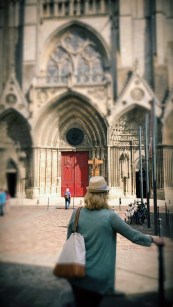
Researching the options for visiting the D-Day sights was exhausting. The overwhelming recommendation was to go for a guided tour. There are half, full, and multi-day tours available from many different companies and guides. Over the last few years, we’ve come to appreciate guided tours, but since WW2 history wasn’t the main reason for our visit, we decided to go it on our own. It worked out well for us, but if you have a real interest in the history of WW2 or D-Day, I agree that a guided tour is a must.
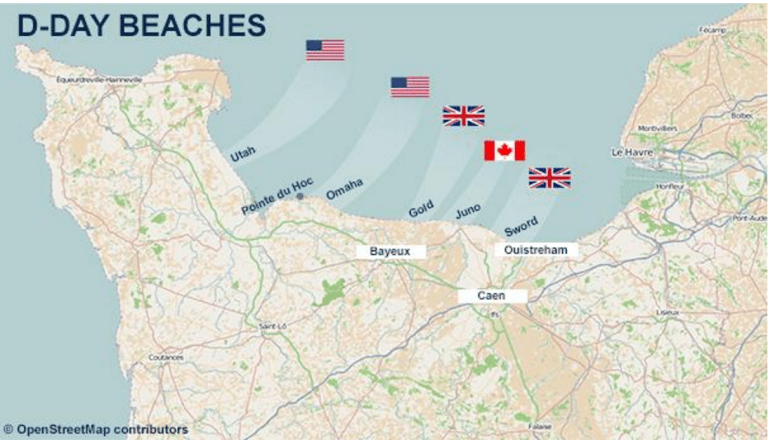
After some research, we decided that Utah Beach was a must for us. There are D-Day museums in every town (see Jason’s Bayeux 2 post). After some independent research, the Utah Beach D-Day Museum (Musée Du Débarquement) seemed like a good bet. It covered the entire before, during, and after history of the invasion, and covered all efforts and approaches.
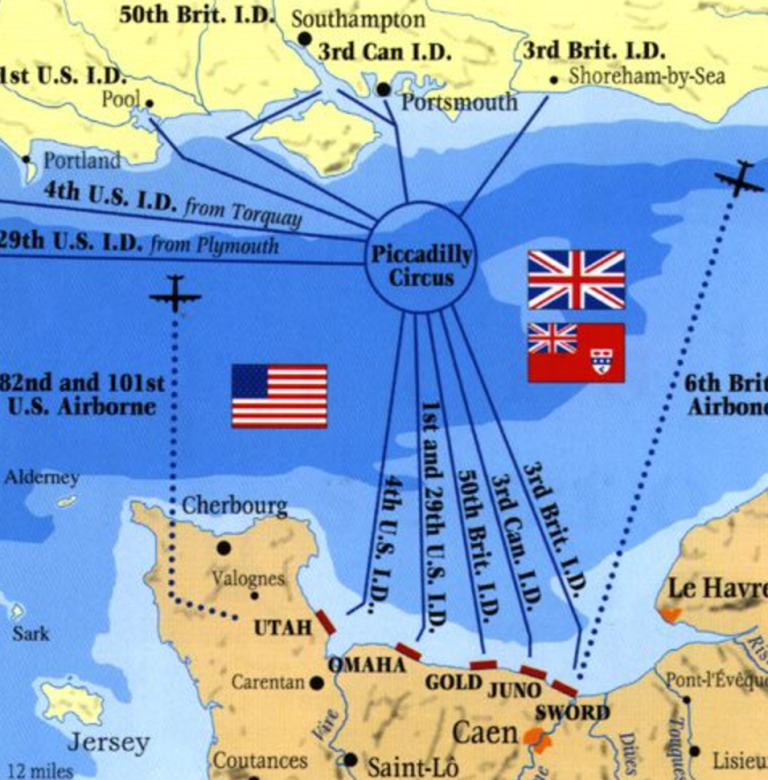
We decided to hit Utah beach first, since it was the furthest drive, and work our way back to the beaches closer to Bayeux. The drive was easy, and parking was a snap. We started by making our way to the beach itself. It was a beautiful and sunny day, but despite the perfect beach weather, it wasn’t difficult to imagine the tumult of that day.
Utah Beach is on the Cotentin Peninsula in Normandy. Retaking the peninsula was critical to the Allied Forces in order to take control of the port in Cherbourg. The Allied plan was to drop a massive airbourne fleet inland to secure the marshlands and prevent German reinforcement from reaching the beach, where the invasion took place. We’ll talk more about the airborne invasion a little later when we visit Sainte-Mère-Église.
By the end of June 6th, 1944, the beachhead at Utah was secure, although it took until June 26th to reclaim Cherbourg. By then, the Nazi’s had destroyed the port, which wasn’t rebuilt until September.

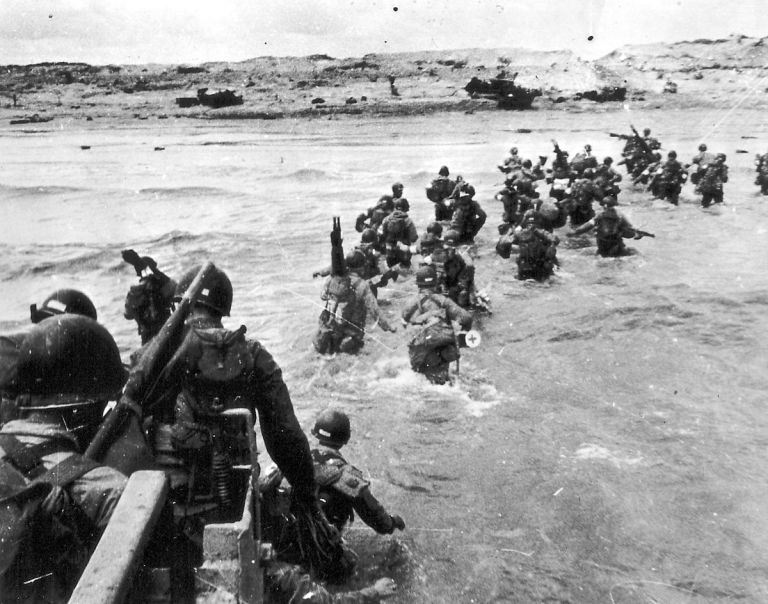
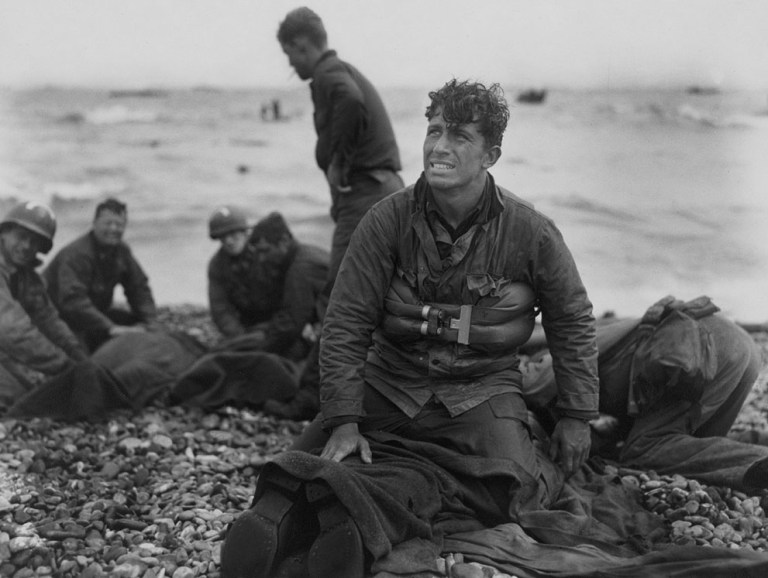
Just before the beach entrance is a replica of the LCVP, landing craft vehicle personnel, that was used during the D-Day invasion. The craft, designed by Andrew Higgens, was based on boats used in the Louisiana marshes. Few originals survive. This replica was donated by the city of Columbus, Nebraska, Higgens’ birthplace.
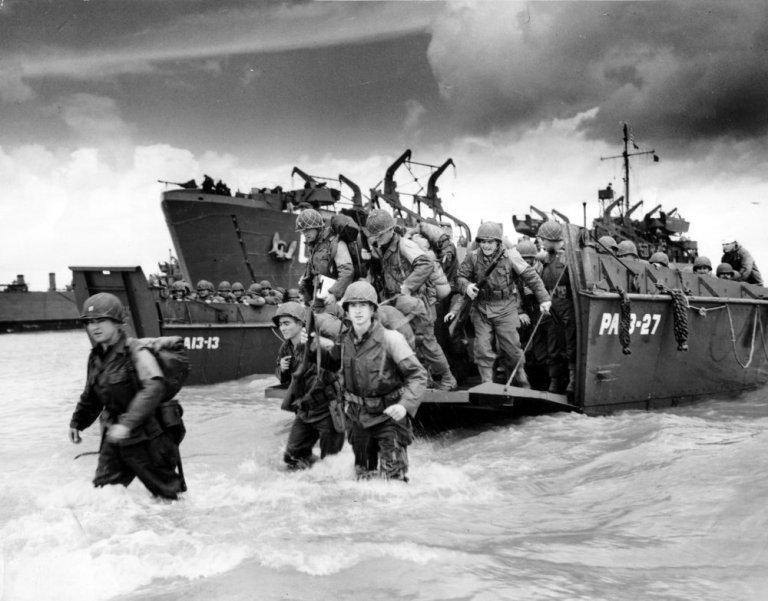

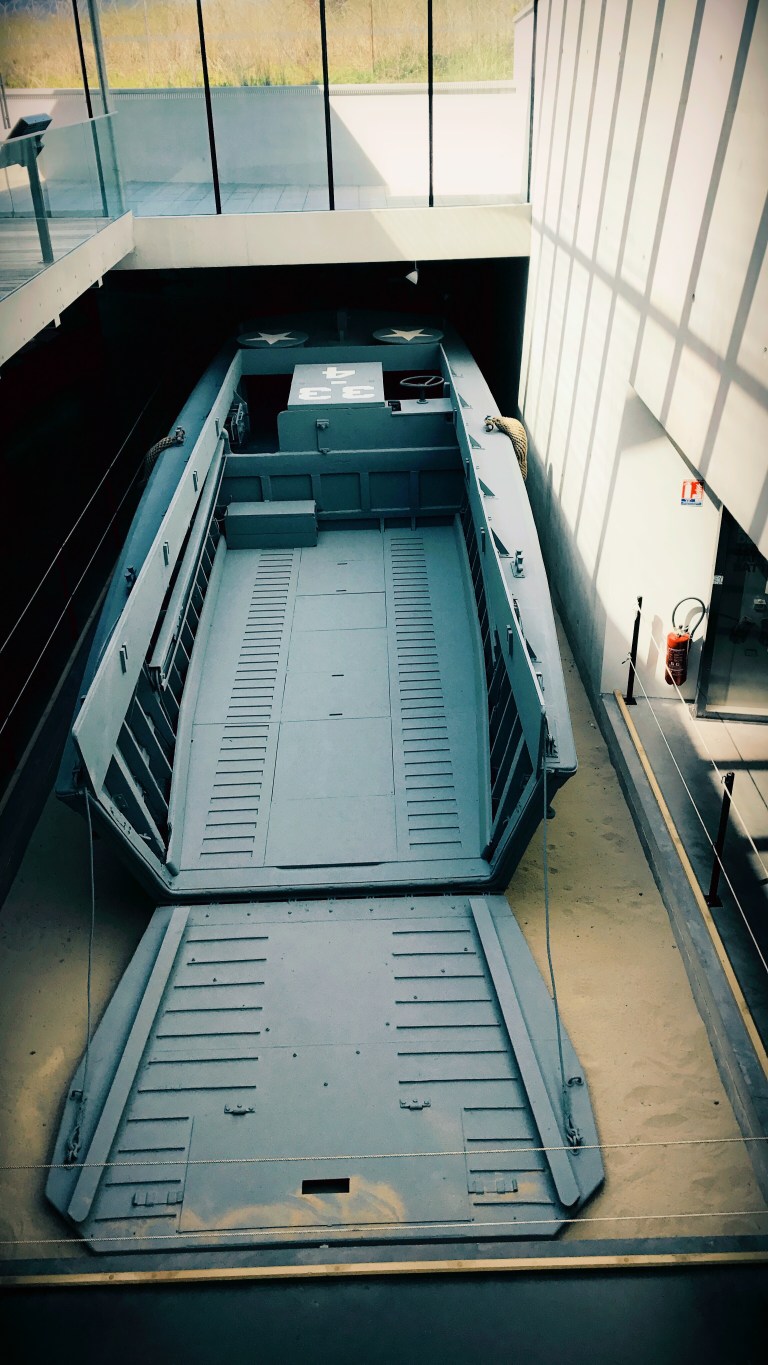
The museum collection was thorough, detailing day by day, the buildup and execution of the invasion. One highlight of the collection is an original B26 Marauder, the Dinah Might. Starting at midnight before the invasion, a massive bombing campaign was undertaken to clear the beaches and destroy bridges and roads to prevent German reinforecments. Later, when we headed to Pointe-du-Hoc, we’ll more thoroughly understand the importance of those bombing campaigns.
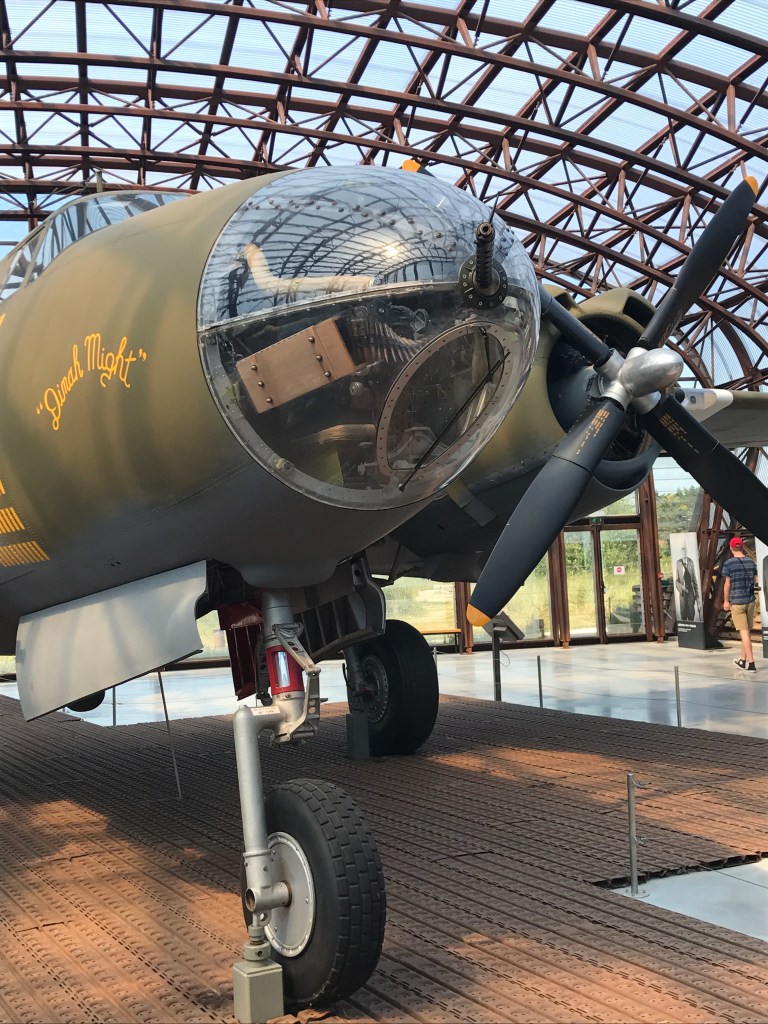
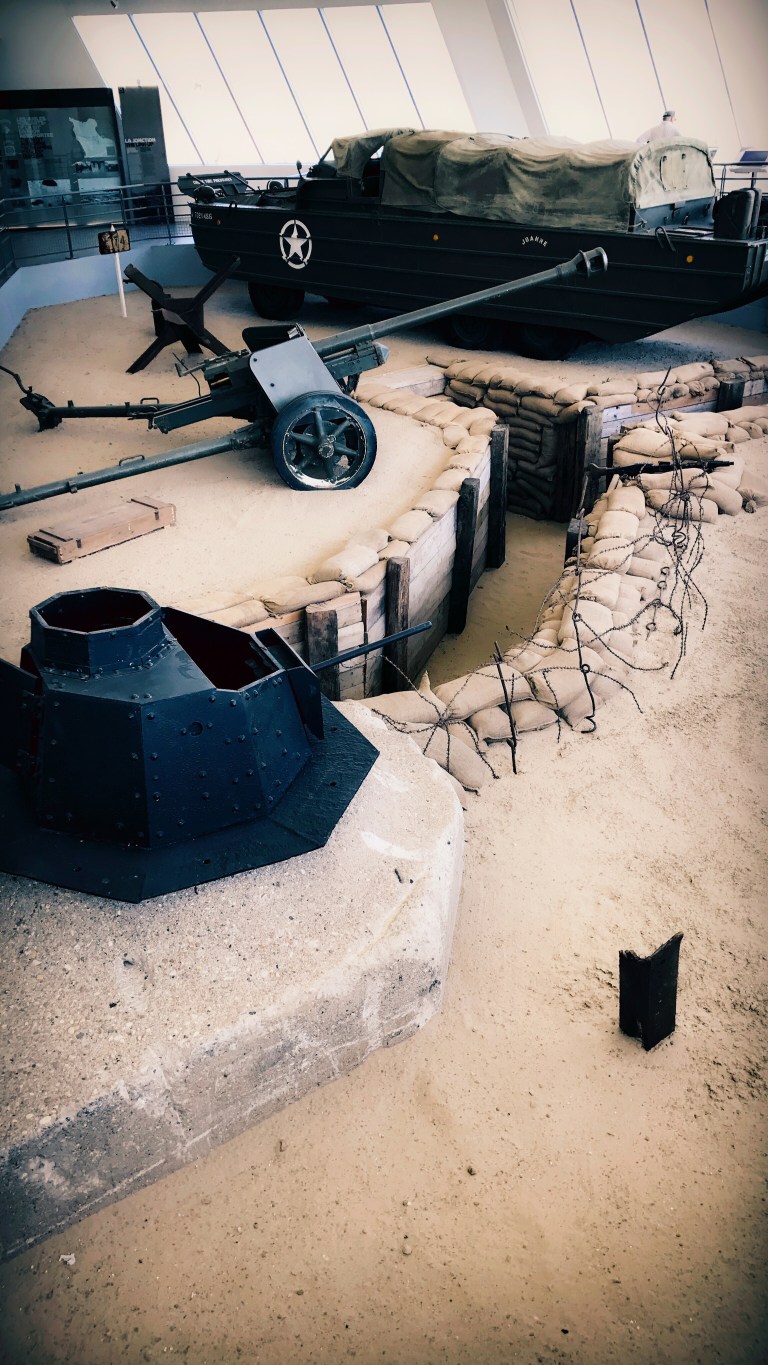
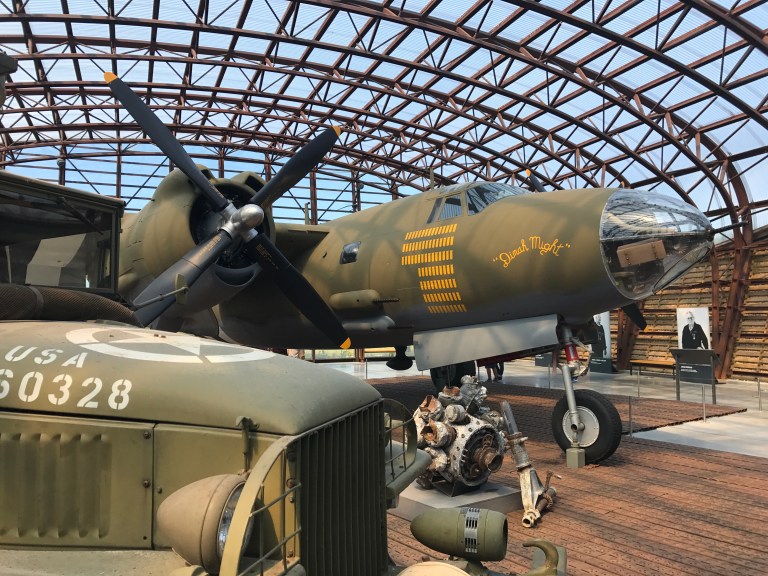

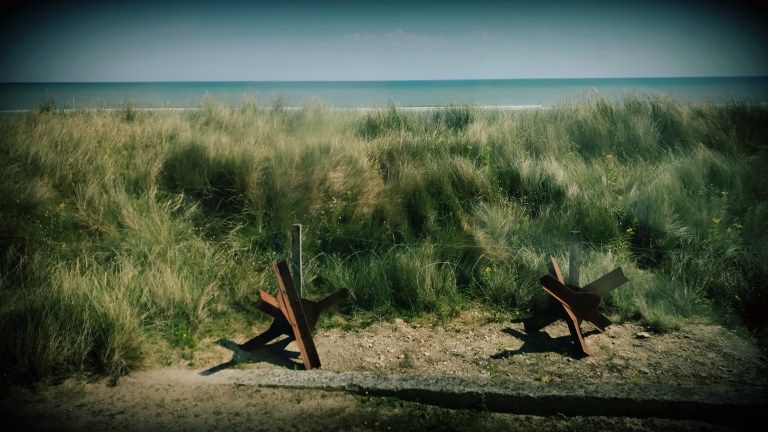
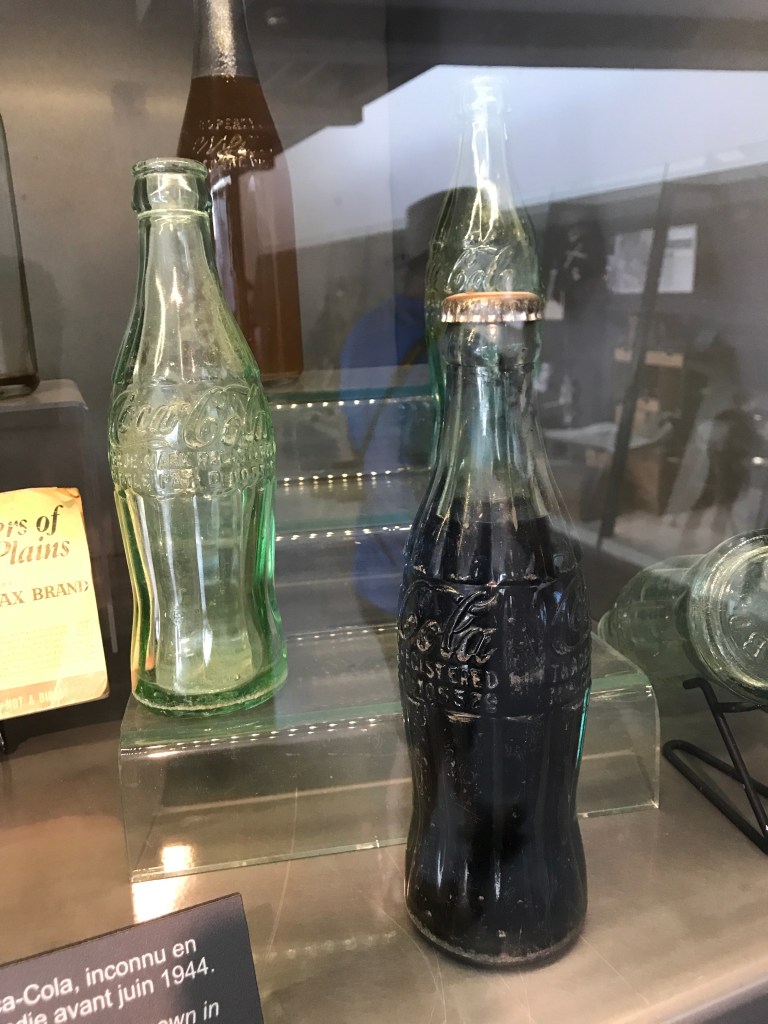
Another moving display was dedicated to the service of Theodore Roosevelt Jr. A Brigadier General, and son of President Theodore Roosevelt, he insisted on landing with his soldiers on D-Day during the first wave of invasions, despite a heart condition and arthritis (he was 57). He rallied his troops and lead them to safety off the beach. He died just over a month later, from a heart attack while in Normandy. He is buried, with his troops, at the American Cemetery near Omaha Beach.
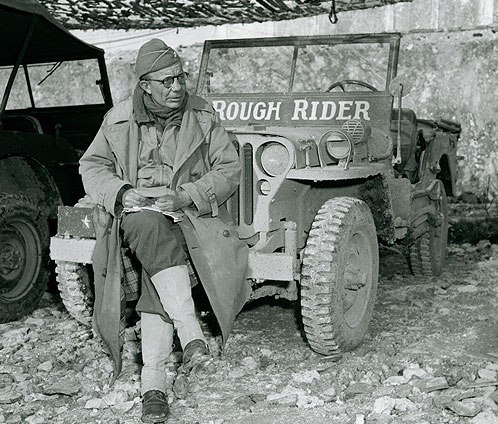
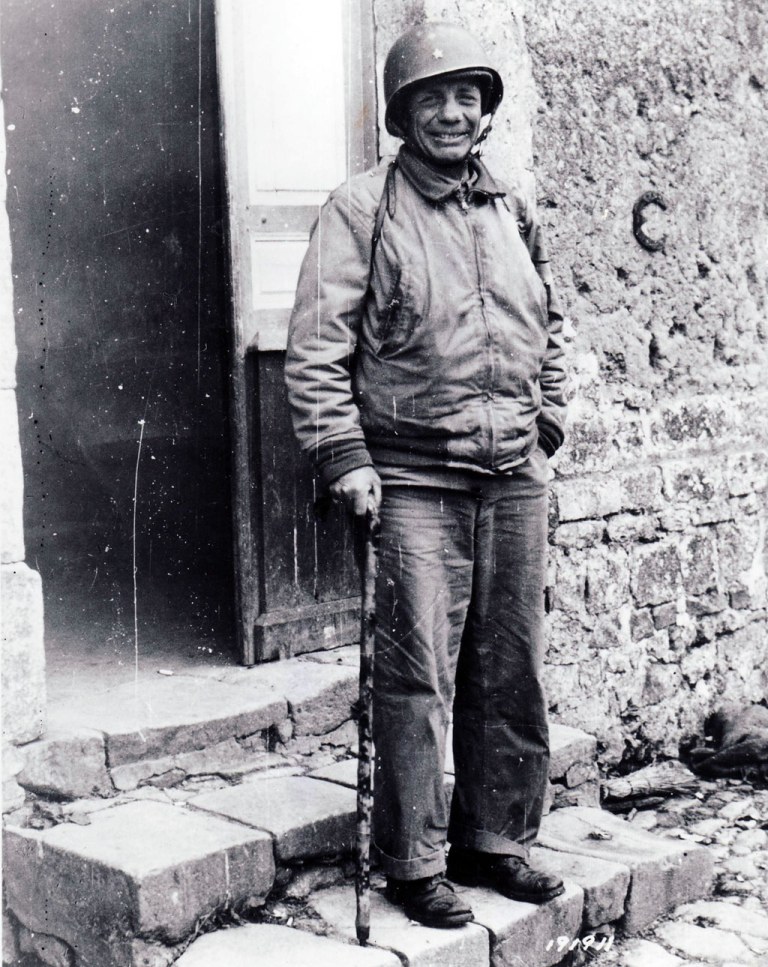

After Utah Beach and the Museum, it was just about lunch time so we took a small detour to the town of Sainte-Mère-Église. This town became a focal point for the airborne paratrooper invasion that occurred just before the D-Day invasion. Over 13,000 paratroopers descended on the Cotentin Peninsula. The weather was terrible and fires from bombing raids made their landings treacherous. Over 4,000 paratroopers were lost. But they were able to regroup and succeed in their mission.
One paratrooper in particular is remembered here. John Steele’s parachute got caught on the steeple of the town church. He hung for two hours until the German’s took him prisoner. He eventually escaped and was able to join the fight to retake the town. A replica of John Steele and his parachute hang from the church today to honor the paratroopers who took part in freeing the town.
We happened on the town during market day, and followed the delicious smell to a local food vendor selling sausages with mustard and onions on fresh baguettes. We gladly joined in and ate our delicious lunch on the town square.
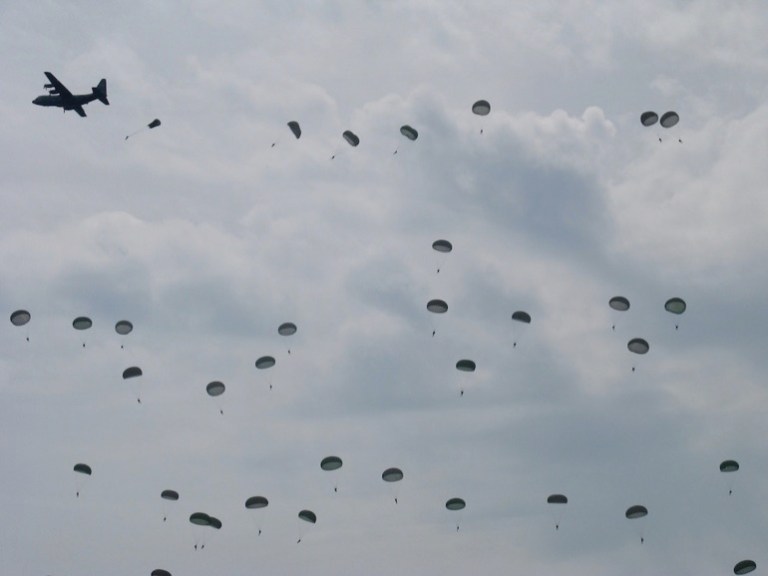
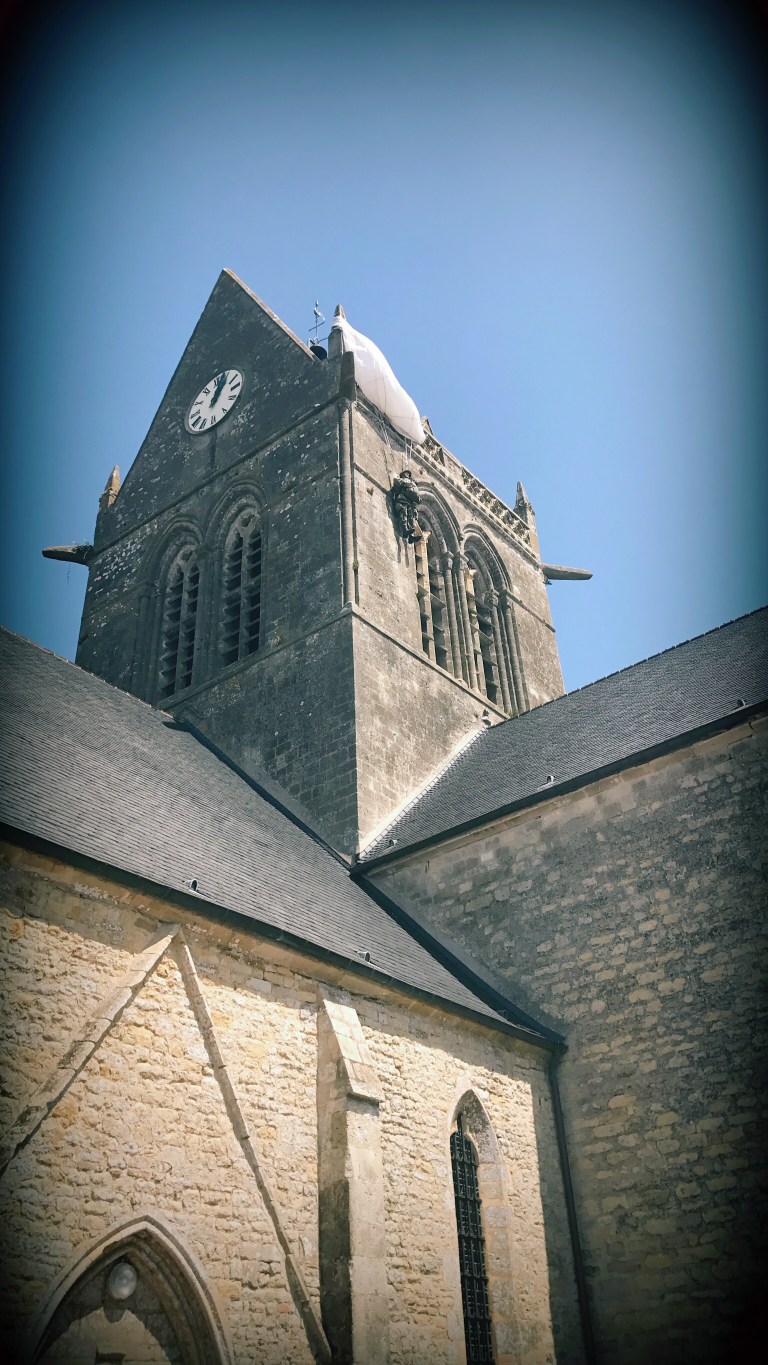

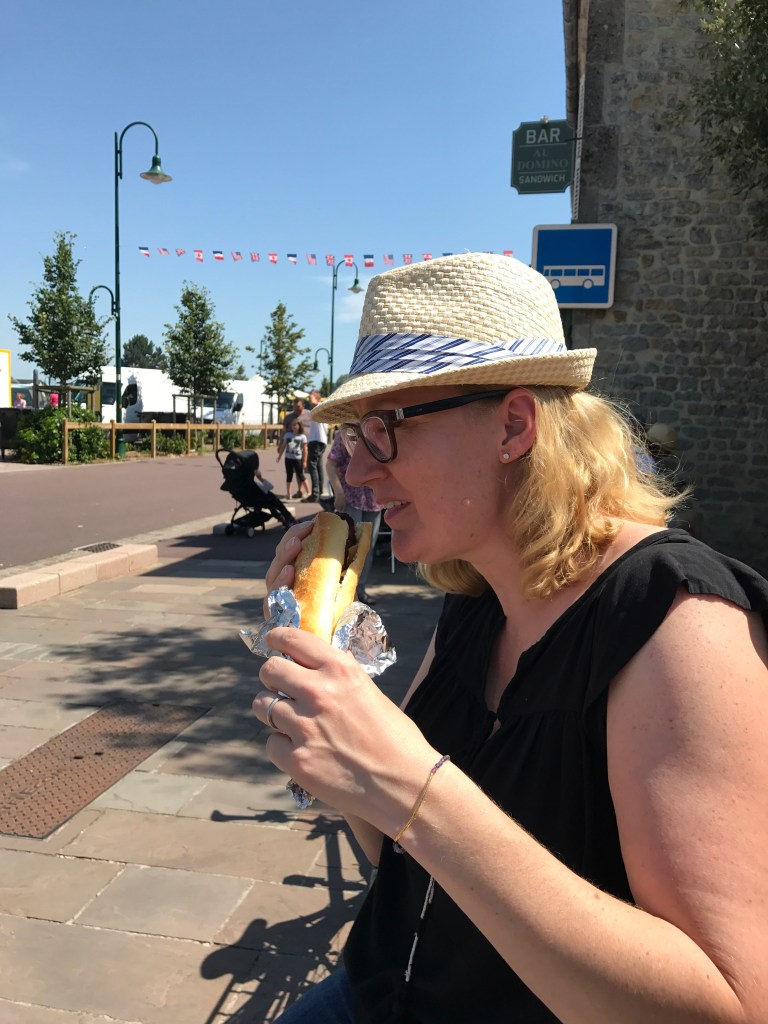
Next, we were off to Pointe-Du-Hoc. Pointe-Du-Hoc is an imposing cliff located between the invasion points of Omaha and Utah Beach. Before D-Day, the Germans heavily fortified the cliffs with concrete casements and gun turrets. Their defenses were pointed inland, assuming the cliffs kept the site safe from see invasion. But the U.S. Army Ranger Assault Group had other plans… they scaled the cliffs and took the Pointe.
The site today tells the story of the aerial bombardment that took place in the hours preceding the invasion. Moon-like craters dot the top of the cliff where Allied bombers attempted to take out the German artillery. It’s other-worldly, especially with the untouched remains of the German bunkers and artillery casements. The dramatic cliffs, sea views, craters make this site an absolute must see.
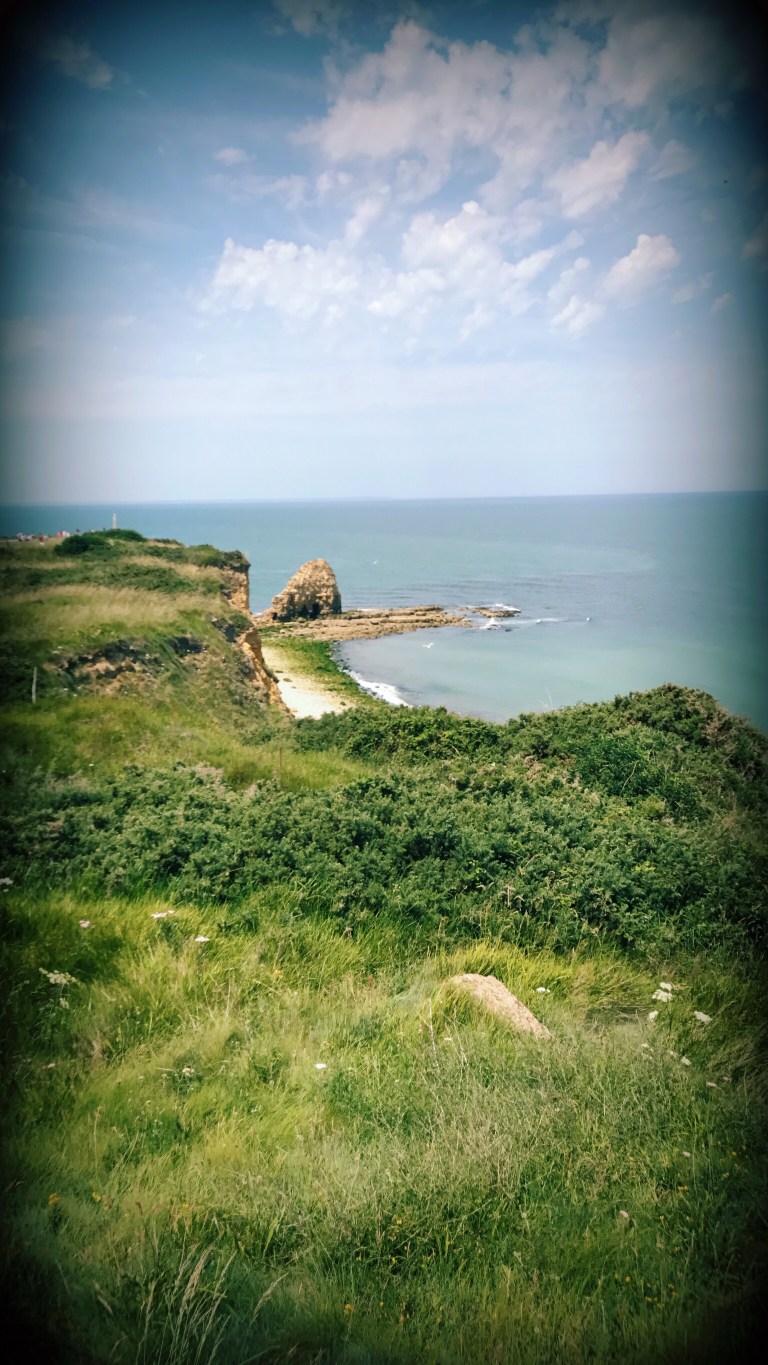

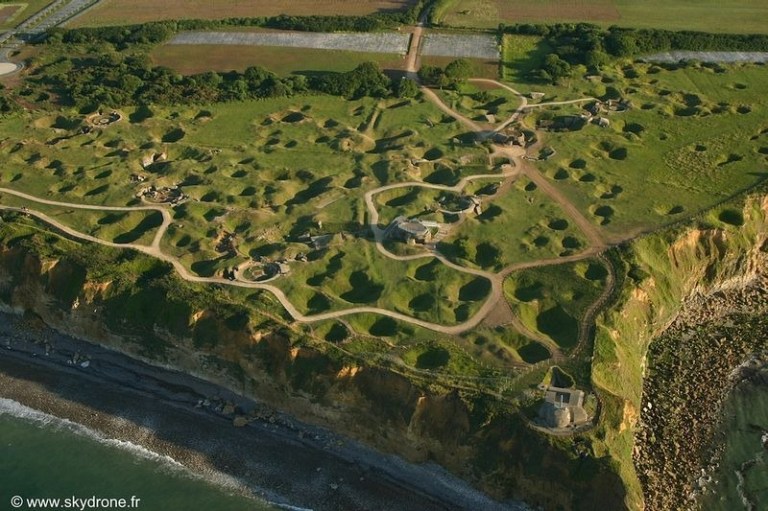
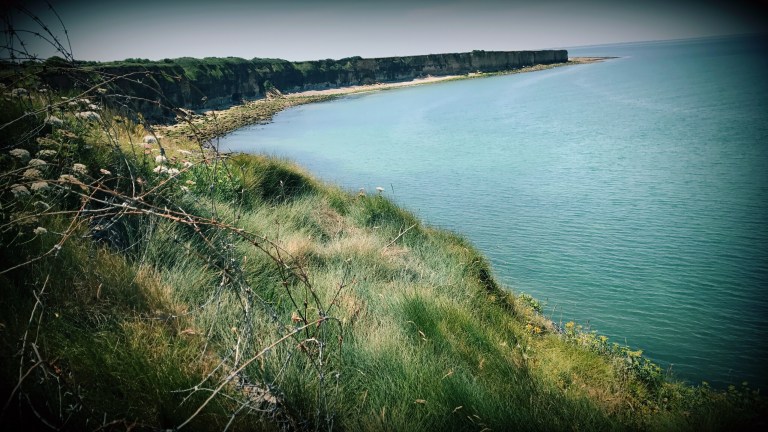


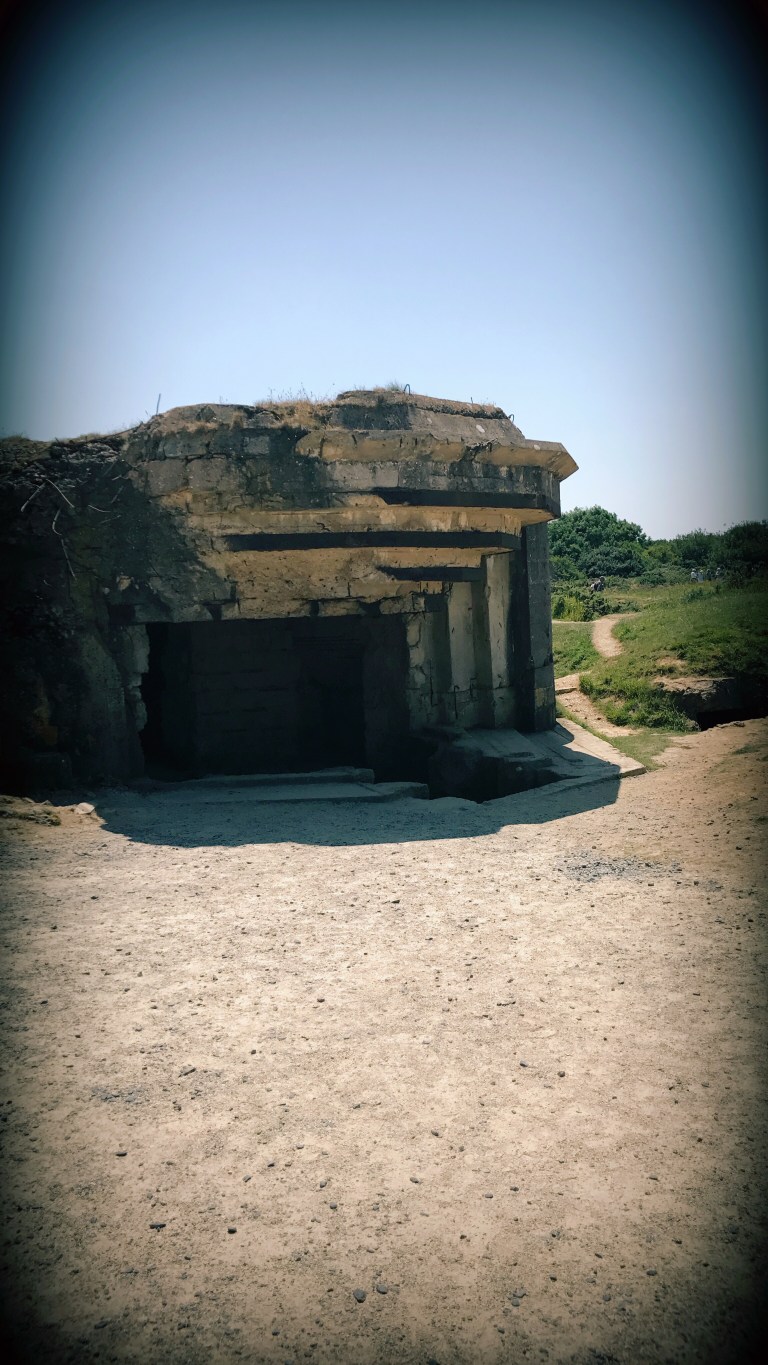
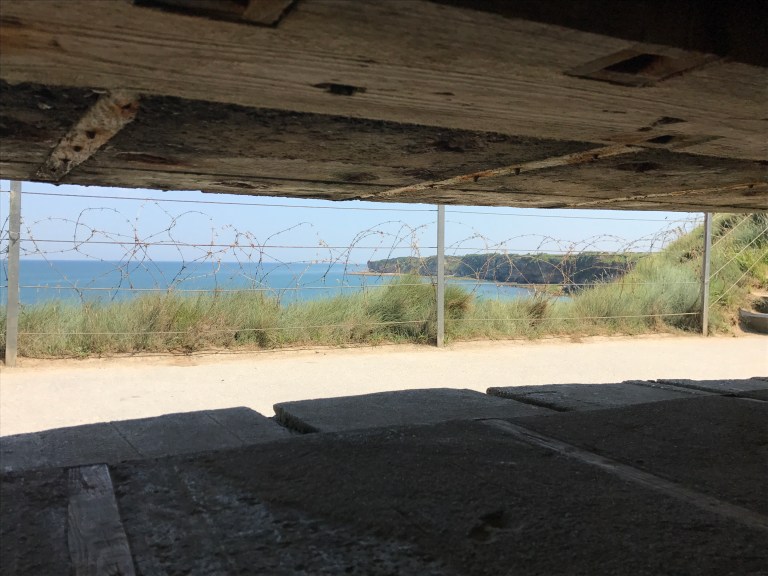

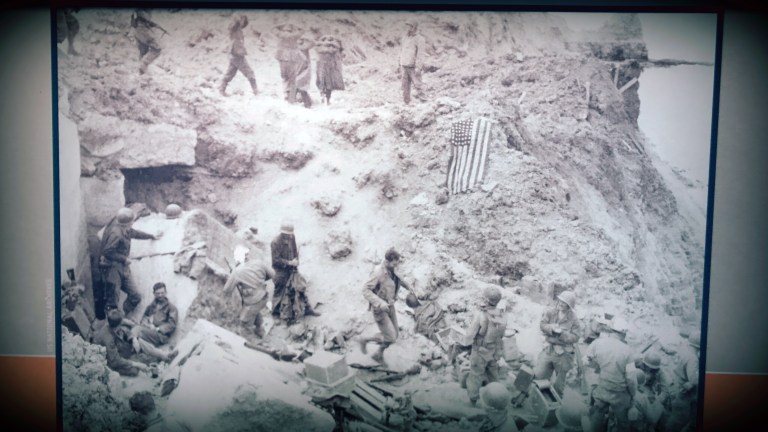
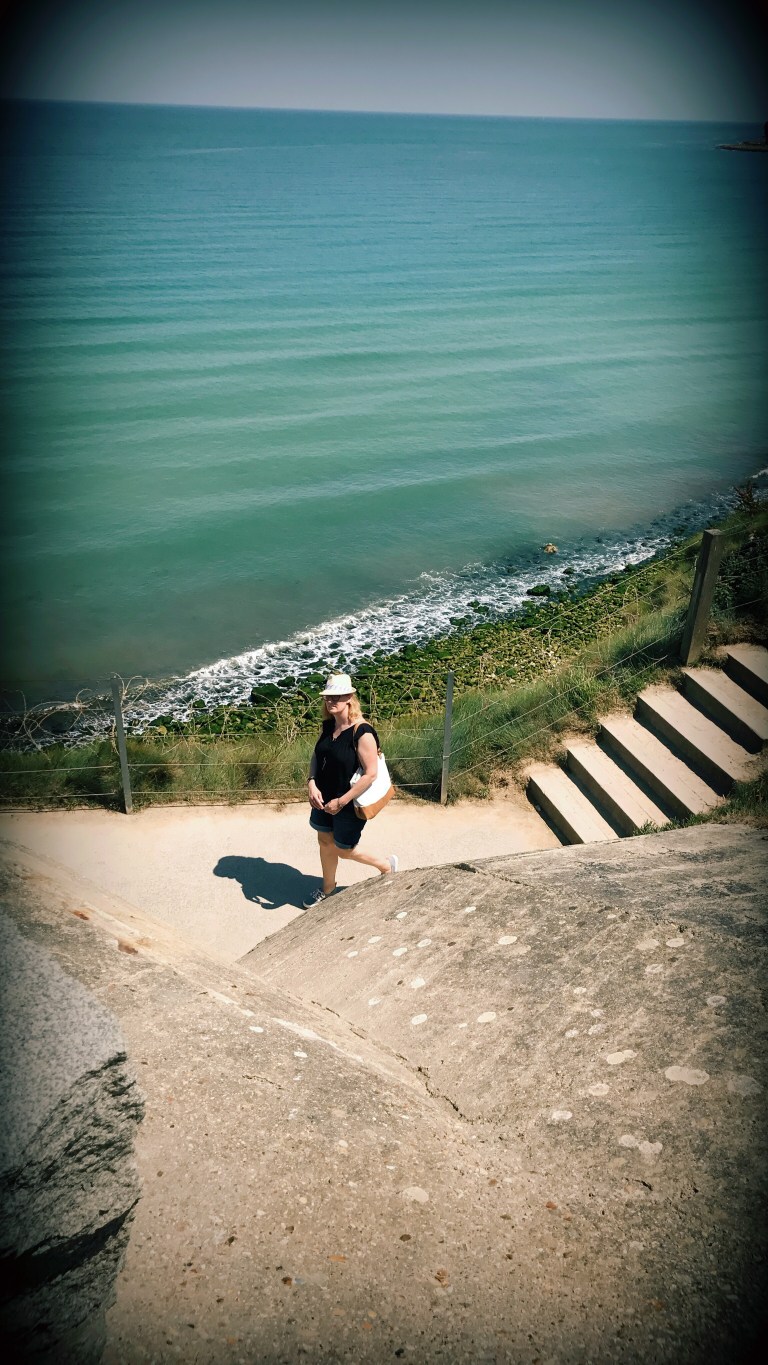
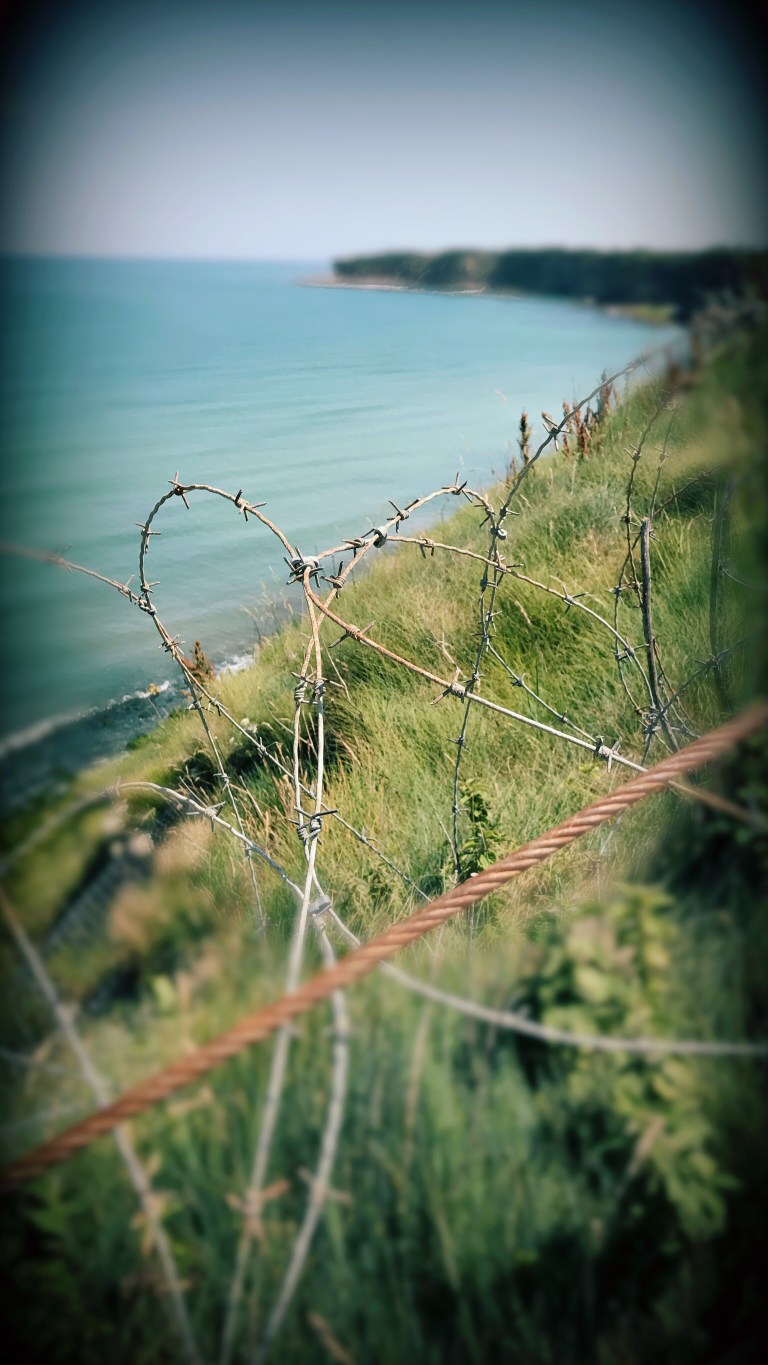
Finally, we headed back towards our home base in Bayeux with our last stops in site, Omaha Beach and the American Cemetery. We should note that despite being in northern France, there was a little heatwave and the temperatures reached 93 degrees as the afternoon wore on.
Omaha Beach is perhaps the most iconic of the D-Day invasion sites. The landing was the most difficult, and the deadliest. The U.S. Infantry Troops of the 29th and 1st Divisions lost over 2,000 soldiers during the assault. Perhaps most well known to our Virginia family, is the 116th Infantry Division, part of the 29th, or more locally known as the “Bedford Boys”. Despite having suffered the greatest proportional losses of any regiment, they moved on, eventually freeing the town of St. Lo from the Germans on July 16th. Our first stop is a moving memorial to the men of the 29th and 1st Divisions who suffered such great losses on D-Day. The moving sculpture shows an American GI dragging another soldier across the beach to safety. It’s hard to imagine the horrors of that day, but movies like The Longest Day and Saving Private Ryan give a glimpse into the experience.
However, it’s easy to forget that Normandy is still a beach, and the little beach towns that existed before the war still exist today. We were not prepared for what we found when we reached Omaha Beach. It’s a beach. A beach used by locals on hot summer days (like the one we were having). The shade of the Les Braves statue was a perfect spot for setting up beach towels and picnic sites. It was surprising, and at first, a little jarring. But I have to admit, I kind of agree that sometimes the best way to pay tribute to loss and sacrifice, is to move on with life. At least, that’s how I felt as a New Yorker on 9/11. So I feel no ill will to the French who were sunbathing under the statue on Omaha Beach.
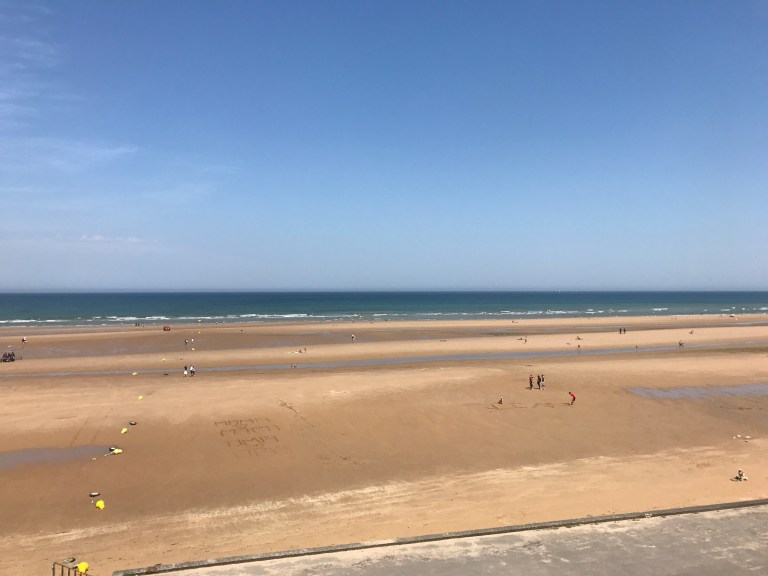
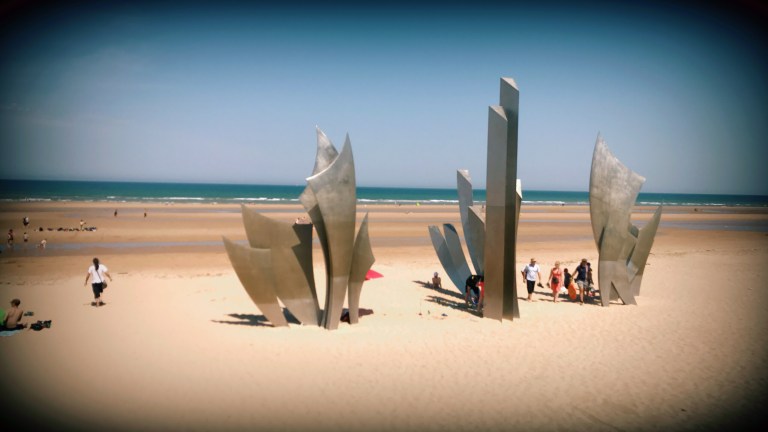
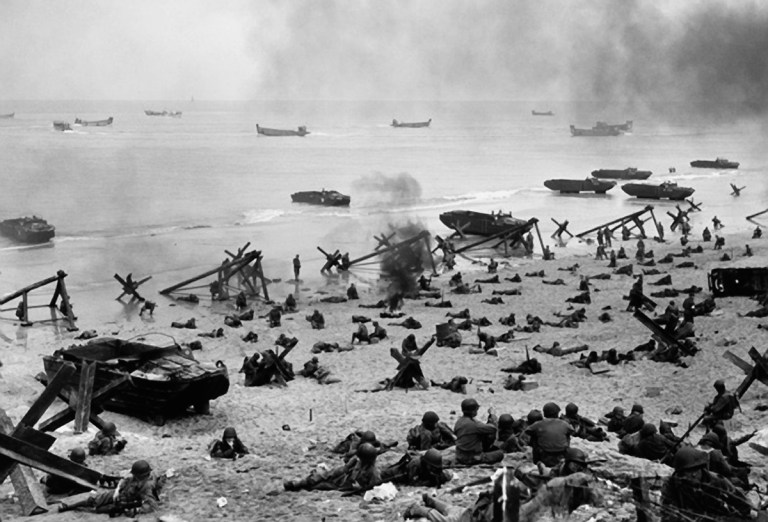

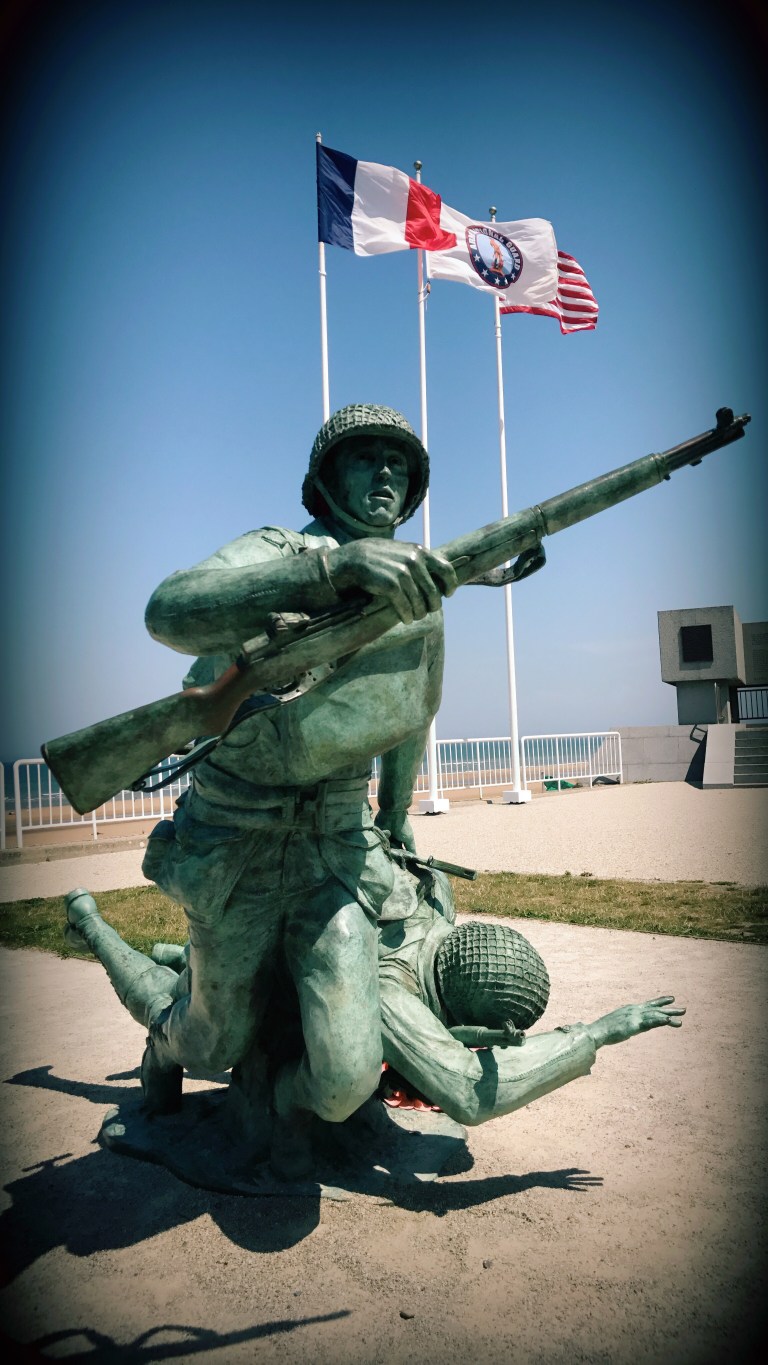
Our last stop was the American Cemetery in Colleville-sur-Mer, Normandy. The cemetery is just adjacent to Omaha Beach, up on the bluffs overlooking the beach. There are few words to describe the emotional part of visiting this cemetery, but architecturally, the word to describe the site is precision. Every grave marker, every memorial, every path, and even every blade of grass is perfect. Much like Arlington National Cemetery, only smaller and even more precise, if you can believe it. But it’s not the architecture that matters in the place, it’s the emotions. And walking through the cemetery, reading each headstone, you can see where each soldier was from, and based on the day they died, guess as to their experience in battle. It’s incredibly moving.
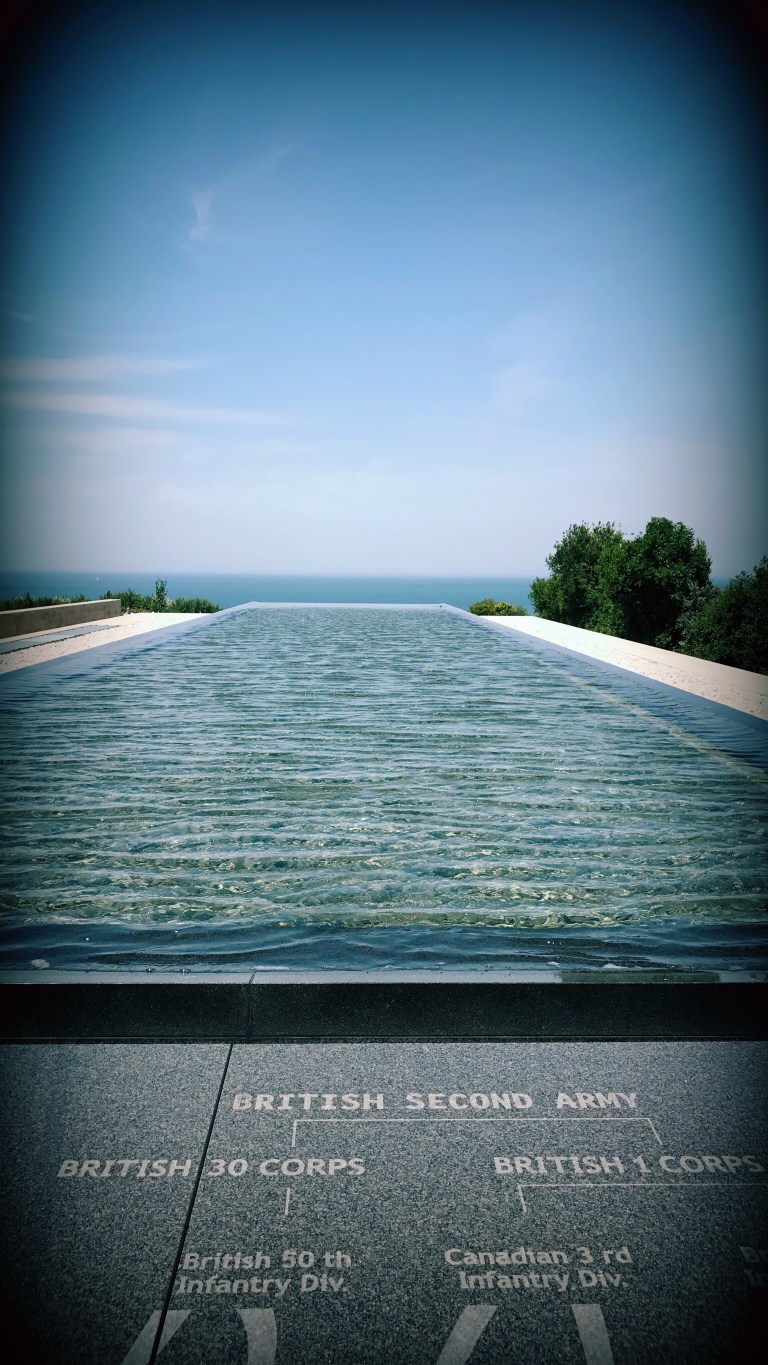
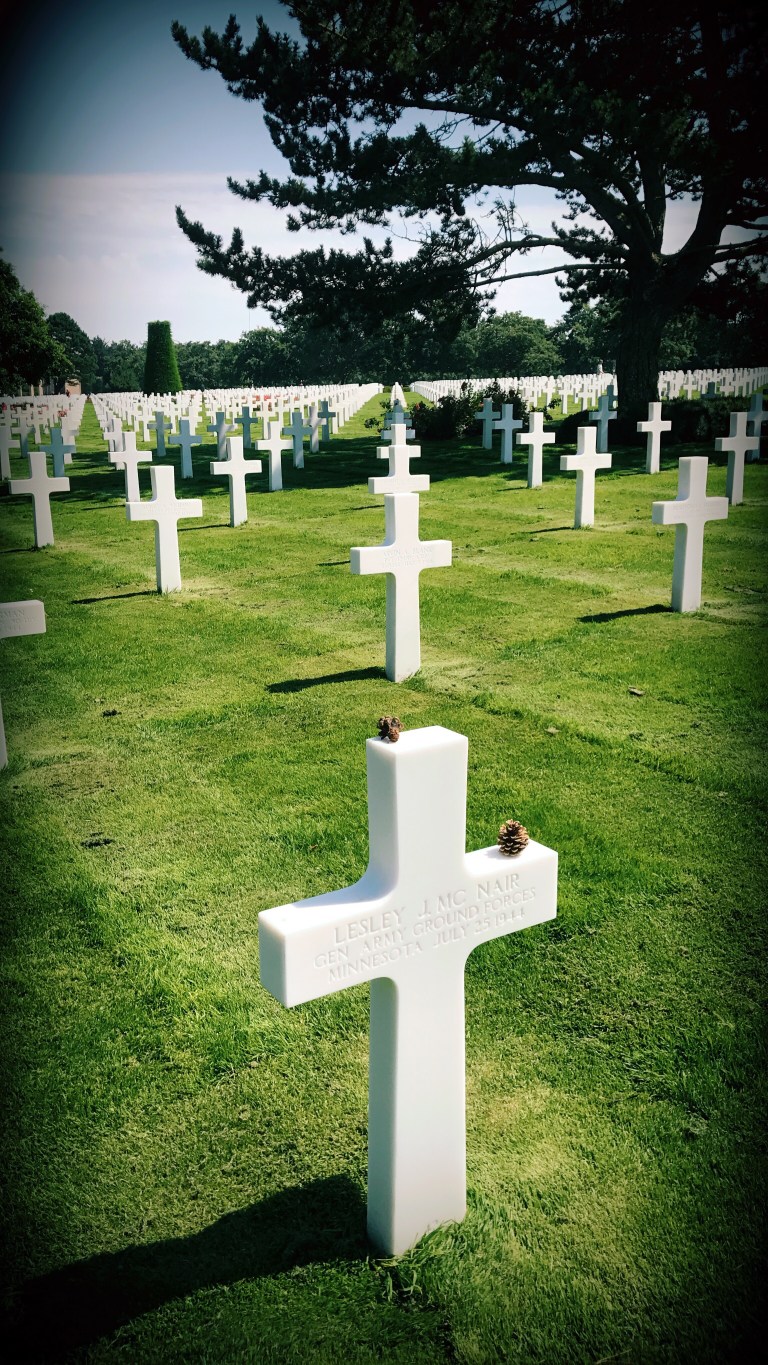
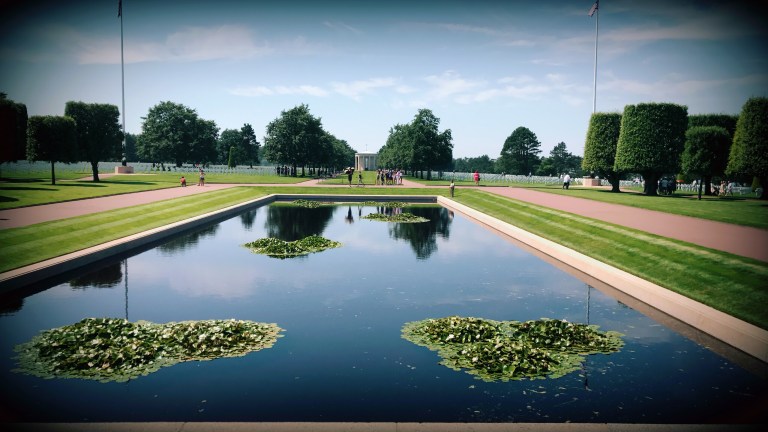

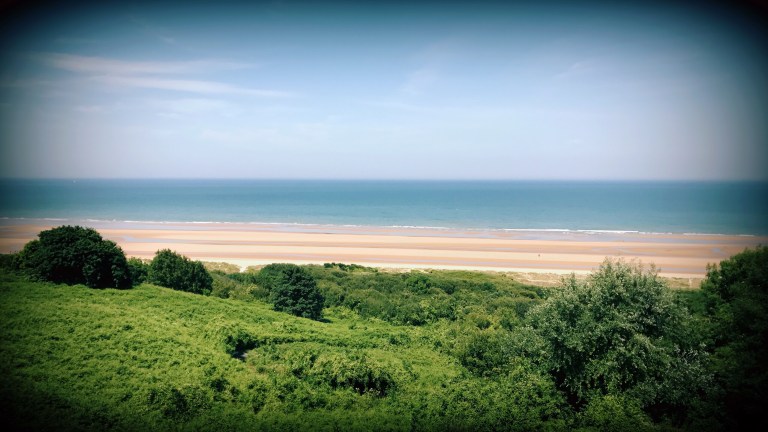

The day was long and the heat was overwhelming, so we were more than ready to head back to Bayeux, cool off, and have a nice meal. We had made reservations at a local restaurant, La Rapiere. It was a lovely meal, complete with amuse bouche, entrée, plat principal, fromage, and desert!

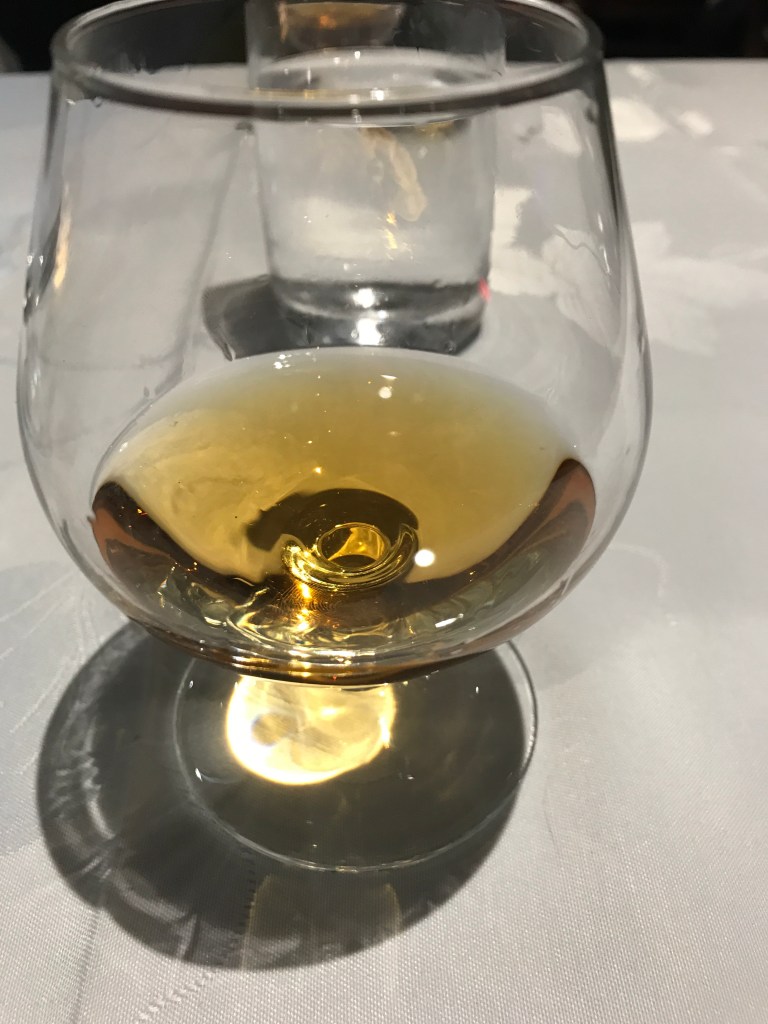

Josette, you did a great job!
Very envious! I would love to visit this site!
Thank you for sharing. My family and I are visiting Bayeux overnight next week on the way to Brittany and your blog has really helped us plan to make the most of our limited time there. Would love to know your absolute “must” visit for 2 adults and 2 children (13 & 10)
Let me give it a bit of thought and I will reply tonight!
Bayeux is very compact (at least the historic part)…you really should see the Tapestry (its almost graphic novel like…so convince the kids with that angle). The Cathedral is beautiful…and you can literally walk 5 minutes from the Tapestry to the Cathedral. And then the town itself… walk along the river…it’s almost painfully quaint and beautiful. Those are my musts for an overnight visit. And eat at the Moulin de la Galette as I showed in the blog…and make a reservation. Have a great visit!
Thank you! That fits. We’re hoping to get 2 days there, with a bit of travel time cutting in. Following your blog, we’ll do Utah & Omaha beaches one day & Bayeaux the next. Blog is fabulous thanks
Thanks for the compliment. By the way, since I didn’t write the blog about the D-Day beaches (my wife did)…let me just emphasize how much more I enjoyed Utah vs Omaha. Utah is quiet and contemplative and there is a war museum right there. Omaha is a literally a beach…used by locals. It doesn’t feel at all like a “special” place…it has beach goers…umbrellas….surfers…people were even using the D-Day memorial sculpture to hang their beach towels. Which is fine…it’s a beach…they should enjoy it…but as a tourist, I just want to prepare you for what to expect. Have fun!
Thanks for the heads up & all your help
We took a tour and found Omaha beach to be very moving as presented. It wasn’t summer, but there were folks enjoying it as a beach, but having someone show and tell us what happened that day was quite powerful.
Rande- thanks for checking out my blog and taking the time to post a reply!
I think we had been so moved by the solitude and contemplative vibe of Utah beach and Pointe du Hoc…so at the end of a hot day when we arrived at Omaha beach…in July…it was just very different. I was a history major in undergraduate school, so I knew what took place that day in June…it was just more difficult to get past the surfboards and ice cream cones. But I know that New York City (where we live) is totally different depending on the weather. Today was a hot, humid day and very smelly, I’m sure tourists were thinking “gross!!!” …but come Fall, it will be crisp, blue skies and absolutely beautiful.
Thanks again for your comment!